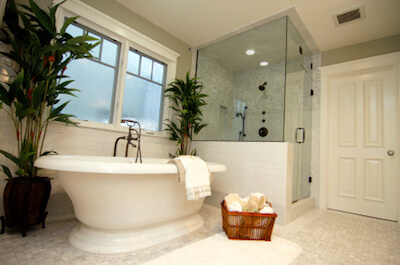Travertine stone tile, it’s one of the oldest building materials in history.
And it’s as popular today as it was hundreds of years ago. There is a reason it’s stood the test of time. There’s a reason why it makes a great addition to your home. All you have to decide is which travertine tile is the best for you.
Travertine is a versatile natural stone that can easily adapt to any situation. Pair it with the right décor and you can create a contemporary style in your kitchen, a peaceful oasis in your outdoor kitchen, or elegance and class in your new master bath.
Travertine was first discovered in Italy, used when Julius Caesar ruled Rome. It is also found in abundance in Turkey, where some of the richest travertine beds have been discovered, and provide travertine for tiling all over the world.
Travertine can be found in many colors, the most common being beige, brown, gray and gold. Because travertine is rich in iron and organic matter, you’ll also find travertine with hints of green, reds or rust colors. Colors depend on the cut and grade of the travertine, and how will it is finished.
A premium grade is going to have consistent color throughout, without color discoloration. Standard grade will have gray or black discoloration, with swirls running through the tile. Commercial grade will often have obvious imperfections with black and gray running throughout the color.
Travertine is cut either with a vein cut or a Fleuri cut. A vein cut is across the vein; a Fleuri cut provides a swirling, circular pattern.
Once a tile is cut, the finishing option will further dictate the look and feel. Honed travertine provides a smooth feel and texture throughout. Travertine is naturally porous; honing and filling the pores helps make it smoother and more continuous throughout the surface area.
Tumbled travertine is cut and tumbled to create an imperfect finish. Tiles are put into a rubber barrel with grit and water and shaken until they appear worn. This weathered look is great in a rustic atmosphere where you want your flooring to look like it’s stood the test of time.
Polished travertine provides a glossy finish; you’ll find this in many commercial entryways
Brushed travertine is created by using a wire brush or a rotary wheel across the flooring to give it texture. It provides a similar look to the tumbled travertine.
The beauty of using travertine tiles is they can be used almost anywhere. Depending on the cut, grade, and finish, it can be used indoor and out, on flooring and on backsplashes and showers. If it’s a flat surface, travertine is an option.
Yet all travertine tiles will perform differently depending on where they are installed. Talk with one of our consultants when you’re considering travertine tiles, to determine the right product for your situation.
